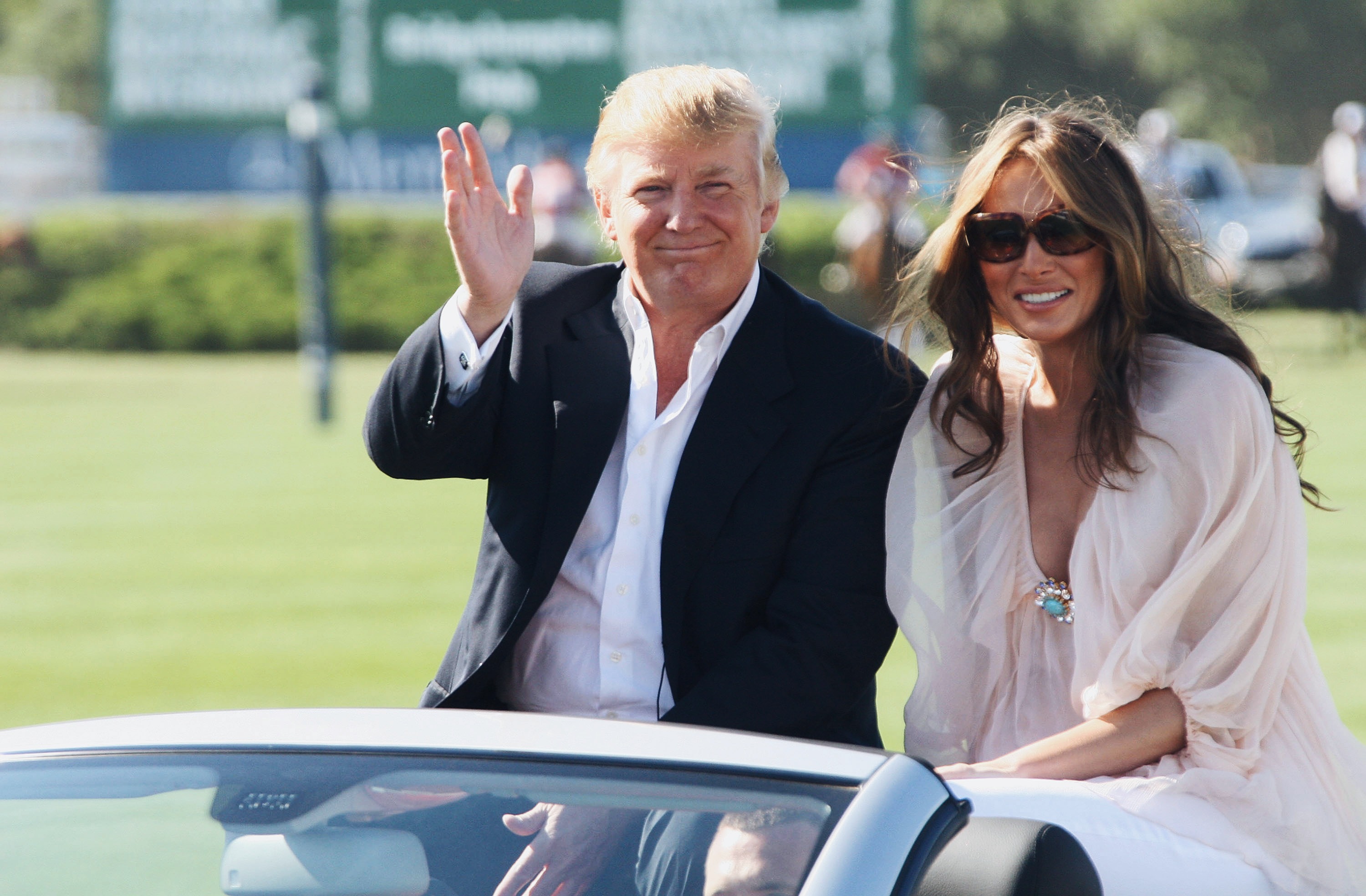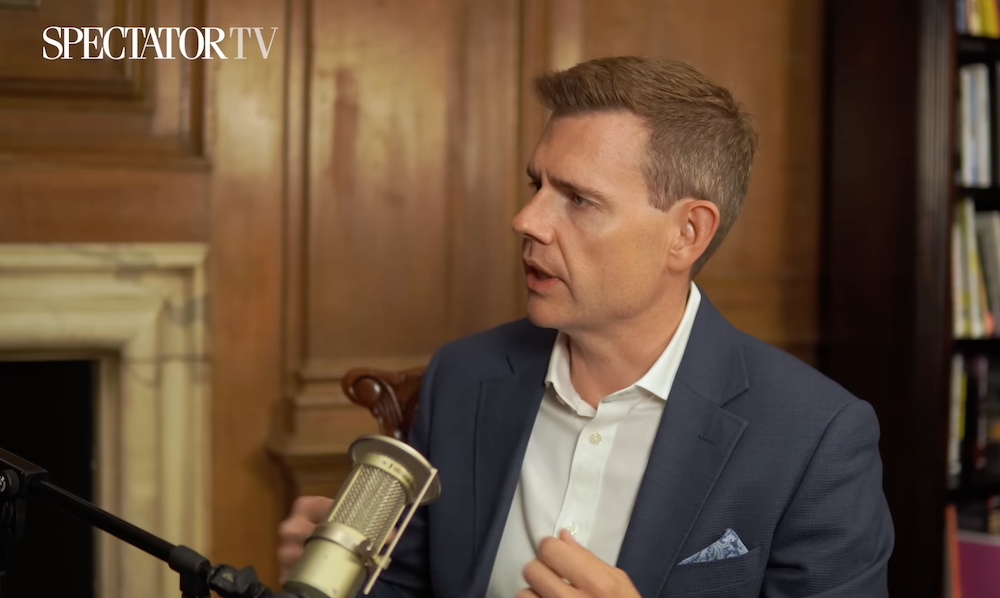In 2003, Donald Trump took delivery of a Mercedes-Benz SLR McLaren, a $450,000 German supercar that blended precision engineering with Formula 1 bravado. Photographed grinning over its bodywork in Manhattan, he looked every bit the unabashed playboy flaunting a new toy. Two decades on, he’s threatening to hammer the very firm that built it – and Germany’s car industry as a whole – with a 25 per cent tariff on European auto imports.
Germany’s post-Cold War boom was built on a single assumption: that ever-deeper globalisation was here to stay. As we explore in our book Broken Republik and its German sibling Totally Kaputt?, the country’s carmakers made an all-in bet on the so-called End of History. From the fall of the Berlin Wall to the eastward expansion of the EU, they surged forward on a tide of open borders, cheap energy, and liberal trade rules. Made in Germany vehicles – engineered to perfection and exported at scale – became global icons. But the world they were built for is crumbling.
Trump’s proposed tariffs could wipe out billions in revenue and a quarter of future profits at firms like Porsche and Mercedes-Benz. Signature models like the 911 and S-Class are suddenly vulnerable in their most important market. And if the EU retaliates, German-built cars produced in America for export back to Europe – including BMW’s South Carolina SUVs – could be caught in the crossfire. The delicate geometry of globalisation is coming undone, and for export-dependent Germany, there’s no Plan B.
An S-Class sedan, gliding through the Hollywood Hills of Los Angeles, was built, unsurprisingly, in Sindelfingen – a long-time stronghold of Mercedes manufacturing just outside Stuttgart. But Germany doesn’t just export cars to America – it builds them there too. That gleaming BMW X6 under the glass roof of BMW Welt in Munich? Not Bavarian, but made in Spartanburg, South Carolina, and shipped back across the Atlantic. A Mercedes GLE crossing a Shanghai intersection? Built not in Stuttgart, but in Tuscaloosa, Alabama. This global ballet of production – optimised for efficiency, not borders – is under siege.
And Germany’s car giants have few options. Trump’s push to bring advanced manufacturing back to the US leaves them stranded. In the short term, they can raise prices and hope Americans will pay for the Made in Germany chassis stamp. If not, they must either take a profit hit or cede market share, in the worst case both will happen. The long-term alternative – shifting more production stateside – is costly and unravels decades of finely tuned logistics. Every option is a retreat from the system they perfected.
At Porsche, the situation is already dire. Profits are slumping due to high costs and sluggish pricing, partly due to a price war in China. It’s now worth less than half its peak value after Volkswagen’s crown jewel was partially listed on the Frankfurt exchange in 2022. It’s cutting 1,900 jobs as part of a plan to revive margins, which were once the envy of the industry. Volkswagen itself has threatened factory closures, and BMW and Mercedes are also enacting cost reductions. Battling with Chinese competition and a structural shift away from combustion engines, Trump’s tariffs could not come at a worse time.
For Germany, the trouble of its automakers isn’t just about an economic pillar weakening. It gnaws at a key aspect of postwar identity. The industry employs over 780,000 people, with entire regions built around it. Streets and squares bear the names of automotive pioneers such as Rudolf Diesel and Carl Benz. The motorway network, with its famous limit-free stretches, is a symbol of national pride, immortalised by Kraftwerk’s ode to fun, fun, fun on the Autobahn. After the shame of the Nazi era, cars transported a more peaceful message about the German Volk. One commentator even controversially summed it up by saying the Mercedes-Benz star had replaced the swastika as the national symbol.
So Germany’s auto woes cut deep and reflect profound fissures in the economic model. Shielded by American security and fuelled by Russian gas, the former Exportweltmeister honed industrial efficiency to a fine art. But now, with Ukraine at war, China flexing its industrial might, and protectionism resurgent, that model looks dangerously outdated.
The signs have been visible for years. Dieselgate destroyed the moral high ground of German engineering. Volkswagen and Mercedes were exposed for using software to cheat emissions tests. The cost ran into the tens of billions, but the reputational damage was worse. The 2015 scandal marked the beginning of the end of Germany’s postwar self-image: competent, honest, unassailable.
The industry’s struggles haven’t stopped. Coddled by the German government, the automakers were slow to pivot electric cars and looked at the transition as a powertrain issue rather than an overhaul in the entire idea of what a car is. It struggled for years with over-the-air updates that Tesla and Chinese rivals had long mastered. Too slow moving and stuck in a tradition of horsepower and handling to adapt to tech-style development, German carmakers struggled to keep pace.
Amid all this upheaval, there was the trusted US market. Americans still liked big powerful cars and were willing to pay for them. High-margin gas guzzlers and premium badge appeal kept sales and profits buoyant. But even US consumers have their limits, if a German badge suddenly costs 25 per cent more.
Economic anxiety in Germany has already propelled the far-right AfD to replace the centre-left Social Democrats as the dominant working-class party. And amid the political convulsions of a massive spending package, the nationalist party is nipping at the heels of the centre-right CDU. Germany’s once-reliable postwar political duopoly is crumbling and a more volatile era is emerging.
Trump’s tariffs are just part of the reckoning
The deeper malaise lies in the global retreat from the liberal order that once powered Germany’s economic engine. As Chancellor Olaf Scholz toured the country in late 2024, trying to revive his reputation after years of economic stagnation and political gridlock, he was met with frustration that cut across party lines. Disillusionment with the status quo was palpable, as voters questioned whether Germany’s leaders still had the vision – or the tools – to chart a course through mounting global headwinds.
The 23 February election confirmed the growing disillusionment. A third of voters backed parties outside the mainstream. The Social Democrats and Christian Democrats are struggling to cobble together a centrist alliance that offers little in the way of new ideas. Similar ‘Grand Coalitions’ backed three out of Angela Merkel’s four terms in an era when problems like aging infrastructure and an inadequate energy system were allowed to fester.
Merkel was known as the ‘auto chancellor’ for her accommodative stance toward the industry. She had long given lip service to electric vehicles, but never backed that up with policy that would have prodded the manufacturers to innovate. She allowed Volkswagen, Mercedes and BMW to develop dangerous dependencies on state-owned companies in China, operating under the assumption that German engineering excellence would always have an advantage.
Those assumptions have proven to be naive, and Germany is beginning to pay the price. Trump’s tariffs are just part of the reckoning. It’s not that Porsche, BMW, and Mercedes are disappearing, but their dominance is no longer assured. And the same goes for Germany itself—unless both the nation and its flagship industry embrace bold innovation and reinvention. The road ahead is uncertain, but if Germany is to lead once more, it must rediscover the spirit that made it great. The future belongs to those who push forward—Vorsprung durch Technik.








Comments